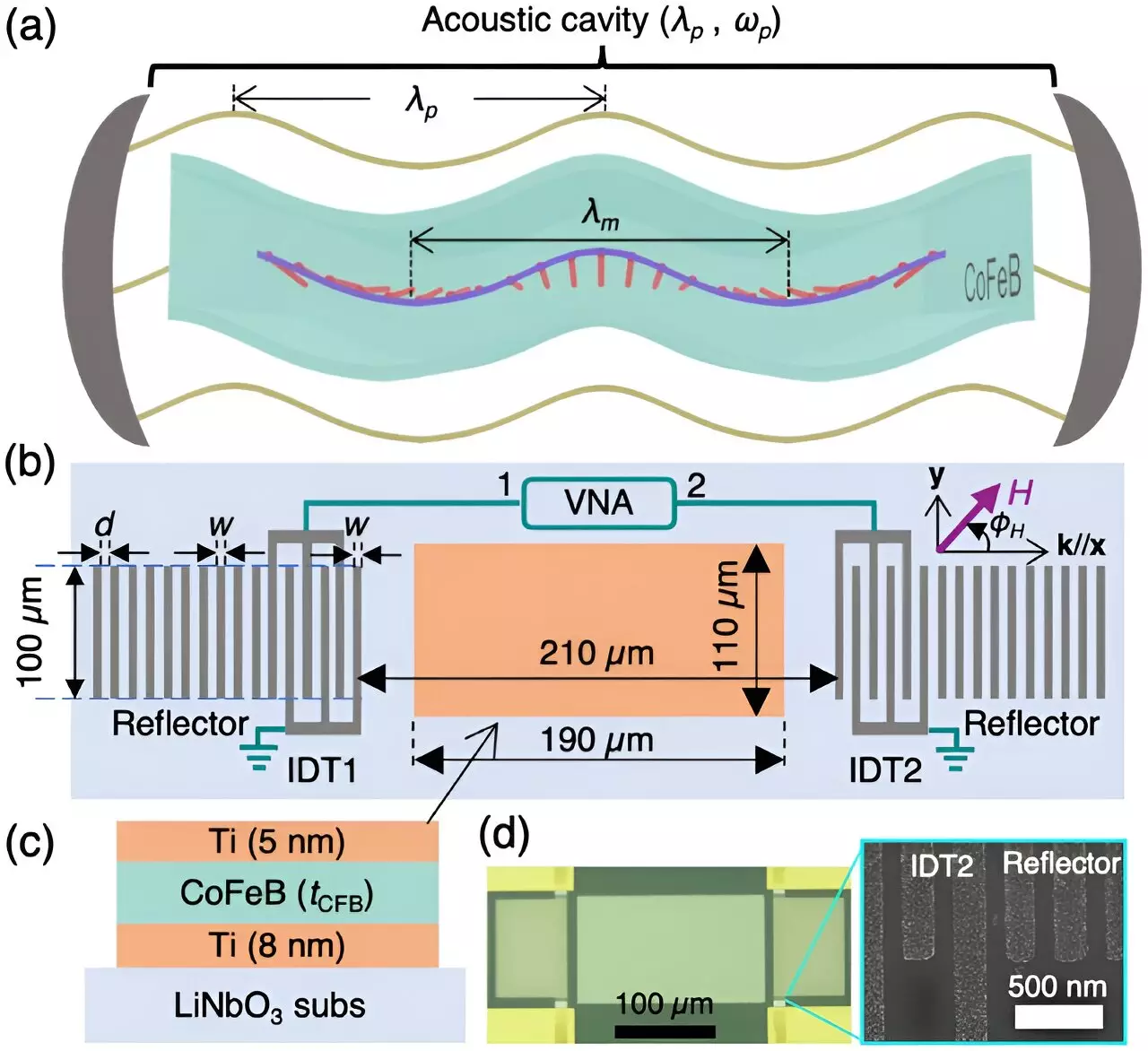Recent research conducted by a team of scientists at the RIKEN Center for Emergent Matter Science in Japan has made significant progress in the development of hybrid wave-based devices. The research focuses on creating a strong coupling between two different forms of waves—magnons and phonons—in a thin film at room temperature. This breakthrough opens up new possibilities for the manipulation and storage of information in innovative ways.
The traditional computing devices we use today rely on the movement of electric charge—electrons. However, there are limitations to the speed at which electrons can travel, and their movement results in the generation of heat, leading to energy losses and environmental concerns. In response to these challenges, scientists are exploring alternative forms of energy, such as sound, light, and spin, to develop devices with fewer losses.
In the study published in Physical Review Letters, the researchers focused on magnons and phonons as two wave-like forms of energy. Magnons are quasiparticles that represent the collective excitation of spins, a magnetic property, while phonons are acoustic phenomena consisting of surface waves traveling along a film. The team aimed to establish a strong coupling between these two wave forms to pave the way for the development of hybrid wave-based devices.
One of the significant challenges faced by the researchers was the difficulty in linking regular sound waves on surfaces with magnets. To address this issue, the team utilized a different type of sound waves known as shear sound waves, which proved to be a better match for magnets. The researchers developed a nano-structured surface acoustic wave resonator, a small on-chip device that confines ultrasound waves to a specific location and enhances shear sound waves, facilitating a strong coupling with magnets in the resonator.
Through their innovative approach, the team achieved a strong magnet-sound coupling in a Co20Fe60B20 film at room temperature. This breakthrough marks a significant advancement in the field of hybrid wave-based devices and offers exciting prospects for future developments in information processing. According to Jorge Puebla, one of the authors of the study, the research contributes to the study of coherently coupled magnon-phonon quasiparticles, which holds promise for the development of information processing devices with minimal losses.
The successful coupling of magnons and phonons in thin films at room temperature represents a critical milestone in the advancement of hybrid wave-based devices. The research conducted by the team at the RIKEN Center for Emergent Matter Science opens up new possibilities for the development of information processing devices with improved efficiency and reduced energy losses. This innovative approach may lead to groundbreaking progress in the field of wave-based technologies and drive further advancements in information and communication devices.


Leave a Reply